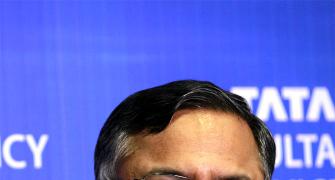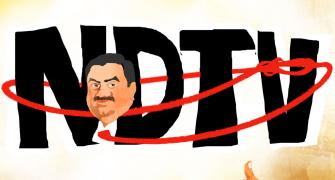
With the first-quarter earnings season winding down, the larger trends in corporate performance and their implications for the economy can now be discerned.
Analysis of about 2,300 companies (excluding finance and oil and gas sectors) indicated that, for the sample as a whole, operating margins were at a four-year high of 15.5 per cent, more than a percentage point higher than four years ago.
Higher margins did translate into some improvement in profit growth; however, the absolute numbers were still cause for disappointment.
Profits after taxes declined on a year-on-year basis by three per cent, as compared with the previous quarter's decline of over 10 per cent.
Most significantly, the relatively healthy picture on margins was in sharp contrast to the still subdued situation in sales performance; topline growth, which was above 10 per cent four years ago, was just about one per cent in the quarter just ended.
Lower inflation rates clearly had a major role to play, but, just as clearly, aggregate demand is still sluggish.
An acceleration in revenue collections had led to some hopes that the recovery was gaining momentum, but these numbers challenge that perception.
When margins improve despite flat toplines, it can only be due to one thing - lower costs.
The softening of energy and commodity prices over the past few quarters has led to significant reductions in unit costs.
Energy and raw material costs declined by 2.6 per cent and 2.3 per cent respectively from the first quarter of 2014-15.
Employee costs grew by almost nine per cent, but here again, this is quite a deceleration from the 18.5 per cent growth seen four years ago.
All in all, raw material costs as a percentage of sales were almost four percentage points lower in the quarter just ended than they were four years ago.
If this pattern continues, from a year-on-year growth perspective, the dividends from lower commodity prices will persist for another two or perhaps three quarters.
Low sales growth and higher margins and possibly even positive growth rates in profits can co-exist until then.
But, what after that? Assuming that energy and commodity prices will stabilise around current levels, the base effect from commodity prices will wear off. Margin expansion and profit increase after that can only come from robust growth in sales. In fact, this is virtually the first axiom of business - sustained growth in profits and profitability needs sustained growth in sales.
The macroeconomic implications of this are clear.
If economic growth does not accelerate soon, lower profits and the expectations that accompany them will further deter private investment.
Idle capacity will not only deter companies from investing and hiring, it will probably induce them to downsize their workforces.
This is a spiral that the government must do everything in its power to avoid. Unfortunately, notwithstanding the government's commitment to critical reforms like the goods and services tax, its inability to push them through will inevitably magnify the risk of the spiral.
It needs to take some bold steps immediately to revive confidence and bolster expectations. At the core of the problem, impinging on the prospects of all the ambitious missions that the government has launched, is the infrastructure deficit.










